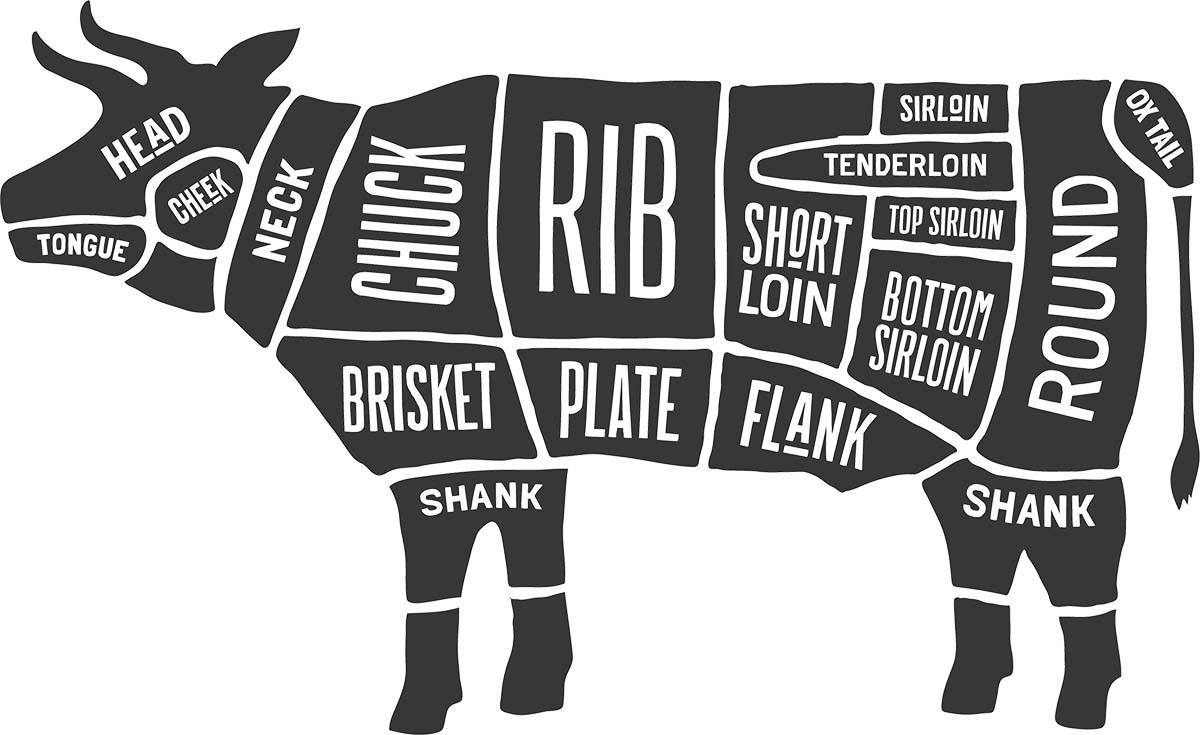Continuous Quality Improvement
posted on
October 30, 2020
Hopefully many of you have noticed the continued quality improvements in our beef. I thought I would give some of our thinking and continued process improvement of why it continues to improve.
We view quality on three main characteristics: marbling, flavor & tenderness. Marbling is the easiest to observe and the last 6 months ours has been the best it’s ever been. It starts with genetics because some cattle are just naturally better at tenderness and depositing fine fat lines in the muscle. We continue to select our breeding herd based on the tenderness and marbling we have observed. Another critical determinant for marbling is the diet of the animal it’s entire life. When the calf is nursing on it’s momma, it’s critical to have good grass in front of the mother to make sure she is supplying a nutritious milk-shake. At about 4 weeks of age the calf starts to graze on it’s own and the continued importance of rotating the cattle to new fresh pastures. After the calf is weaned at 6-8 months of age the calf has to be ready to go on it’s own with more good grass and a supplement high in protein. Then as it continues to grow we continue to provide a daily balanced diet of roughage, protein and energy which keeps the calf healthy, growing and leaves fat cells in the meat. One of our goals is to have them gain greater than 2 pounds each and every day. This constant attention to their daily protein, energy & roughage intake maximizes the marbling that is in the genetics of the animal.
The tenderness seems to be very genetic, and cattle handling determined. I sorted all the steaks we sent out for the first 6-8 years and now am doing it again. Back in 2004-2008 we would have 1 out of 10 steers or so where the steaks wouldn’t have the deep rosy, red color. I remember taking some of these home and eating them to find out that they also were tough. We quickly went through the process of eliminating these genetics from our herd. Continued nutrition also impacts tenderness as it is common in the beef industry to “grow out” cattle by feeding a high roughage diet from 8 months of age to 14 months. Picture the cattle roaming a Kansas wheat field in the winter months to try to get a nutritious meal but the watery wheat pastures goes right through them and the cattle growing in frame size but only putting on 1-1.5 lbs per day. They become skinny teenagers that lose their marbling. Then they get sent to feedlots and jammed with high energy corn diets and they get fat but the fat is all on the outside of the muscle.
Tenderness is critically impacted by the last 24 hours of the cattle’s life. Conventional beef is loaded on semis, hauled hours to a process facility and wait to be unloaded & then wait in crowded pens to be slaughtered. The cattle aren’t fed for the final 24 hours as it is considered a waste as some of the feed is left in the rumen and is expensive. Picture the complexity of a plant that processes 6,000 cattle per day, brought in on 130 semi-trucks each day. However, a study by Michigan State shows that cattle lose blood sugar levels when this is done, and blood sugar directly impacts tenderness. So, we make sure there is as little time as possible between the cattle’s last meal and their processing, often within 3-4 hours. Also, the process of loading the cattle onto a trailer and driving less than 10 miles to the processing plant is as stress free as possible. We also look at the cutting process for quality and give a hat’s off to Randy, Kent & Chris Sander at Sander Processing who cut most of the steaks and do such a great job.
Burgers: Then there is the whole process of getting the burgers made right and packaged right. We also think our burgers are more tender and flavorful because of all of the above, it doesn’t just impact the steaks and roasts. We continue to have extra ground beef and would love to talk to anyone about trying our burgers and provide samples for a side-by-side comparison.
Our new processing facility under construction will continue to give us the ability to improve quality with more space and new equipment.
We will continue to improve the process for consistent marbling, flavor & tenderness and always appreciate your feedback. I learned so much from our customers in the early days and remember getting feedback from Chef’s Greg Hardesty, David Tallent, Greg Raggo, Mark Marlar, Abbi Merriss, Regina Malichek, Ryan Nelson, Chris Eley, Neal Brown, Tyler Herald, Dan Dunville (sorry if I forgot anyone) and appreciate any feedback that you can send my way to continue improving.
Thanks for your continued support of sustainable/regenerative agriculture!- Dave




